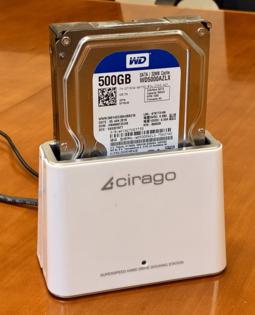Jim Rossman: A dock can help connect a bare hard drive to your computer
Published in Science & Technology News
This week I got an email from a reader who asks, “I have a stand-alone hard drive that cannot be accessed anymore. I've tried different laptops and different cables, but to no avail. The light is still on it (it is a Seagate Free Agent hard drive, probably 10 years old or so), but it no longer makes any noise. Of course, I have all my pictures and financials on there. I've identified some companies that are supposed to safely retrieve your information for you. However, I don't know who to trust with that job and I wouldn't want some company to steal my information and/or ultimately lose it all together."
Well, hard drives can just die, but I hope that’s not the case here.
My first move would be to remove the hard drive from the enclosure. I’d search YouTube for instructions for your specific drive. Once you have the drive out, you’ll need a dock to connect a bare drive to your computer via USB. You can buy a dock online for around $25.
The dock will power the drive and you’ll know pretty quickly if you hear the drive spin up. If it powers up, it should appear on your computer when you plug in the USB cable.
If the hard drive is truly dead, there are companies that can recover the data. One of the best known of these companies is called DriveSavers. I’ve sent a few customers their way over the years. There are other options. Do a search; some may even be local to you.
Older hard drives have platters that store the data much like a record album. Once the data is written to the platter, it doesn’t just disappear, but if the read heads or power supply are not working, your computer can’t access the data.
A good drive recovery company will take the drive into a clean room and replace any of the components that have failed. They can even remove the drive platters and transplant them into a donor drive of the same model.
Be warned the cost to recover your data can range from a few hundred to a few thousand dollars. You usually can’t get an exact estimate until they have your drive and can assess the problem.
This is why having multiple backups of your important data is a best practice. Spend $75 or $100 on another external drive or even a large flash drive and make a second backup that you keep in a location away from your computer.
©2025 Tribune Content Agency, LLC.







Comments